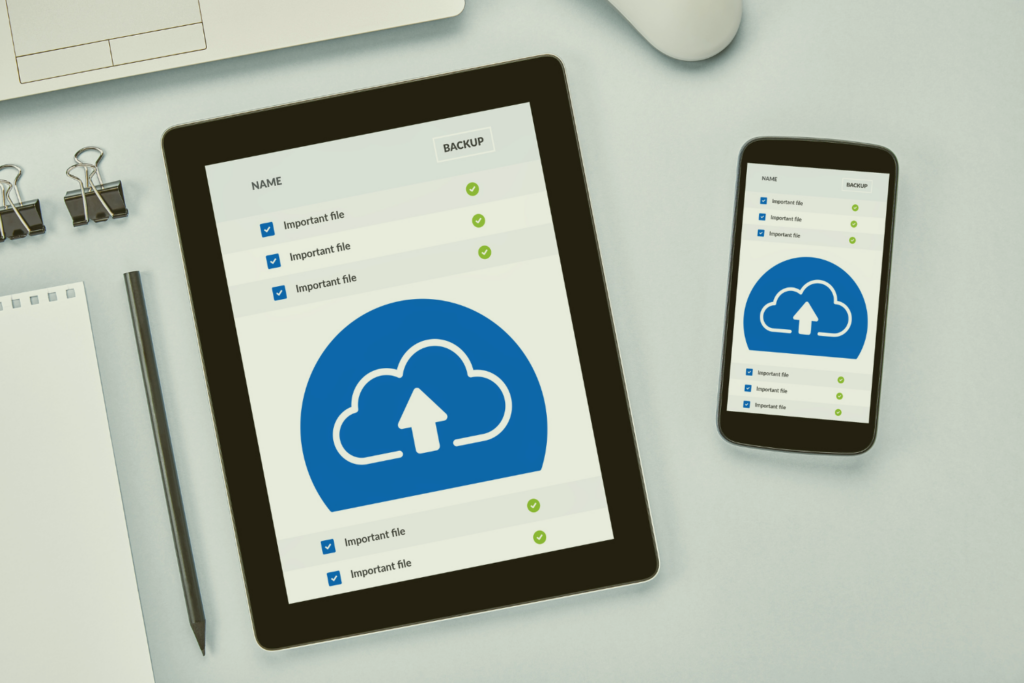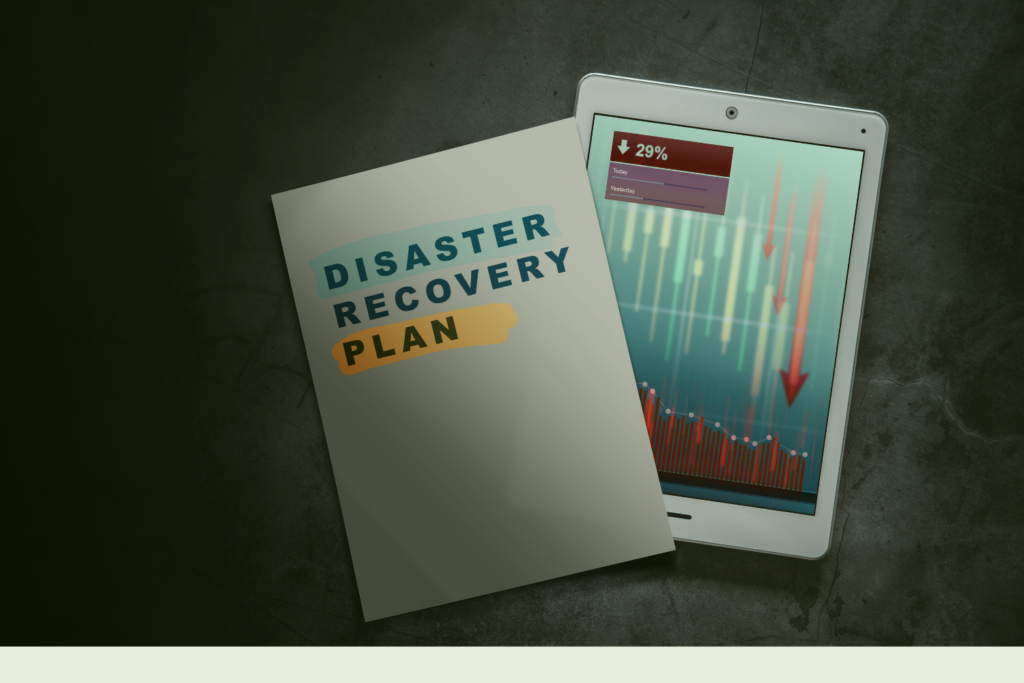The remote workforce era has transformed work culture and increased reliance on digital tools and cloud-based solutions for collaboration, communication, and data storage. As businesses generate and store vast amounts of data in the cloud, it has never been more critical to ensure business continuity and protect against data loss and downtime.
Implementing a robust cloud disaster recovery strategy is essential to mitigate risks, safeguard critical data, and enable swift recovery in the face of potential disruptions such as cyberattacks, natural disasters, or hardware failures.
Understanding Cloud Disaster Recovery
As businesses increasingly depend on digital tools and cloud services in the remote workforce era, it is crucial to comprehend the role of cloud disaster recovery in safeguarding valuable data and ensuring business continuity.
Cloud-based backup and recovery
Cloud disaster recovery refers to the process of backing up and restoring critical data, applications, and infrastructure using cloud-based services. This approach involves storing copies of data in a secure, offsite cloud environment, which can be accessed and restored quickly in the event of a disaster. Cloud disaster recovery enables businesses to recover their data and resume operations with minimal downtime.
Scalable and cost-effective solutions
One of the main advantages of cloud disaster recovery is its scalability and cost-effectiveness. Organizations can easily adjust their storage and computing resources to accommodate changing needs and pay only for the resources they use. This eliminates the need for expensive upfront investments in hardware and infrastructure, making disaster recovery more accessible and affordable for businesses of all sizes.
Benefits of cloud disaster recovery
Flexibility and accessibility
Cloud disaster recovery offers flexibility and accessibility, allowing businesses to access their data and systems from anywhere with an internet connection. This is particularly beneficial for remote workforces, as employees can quickly resume work even if their primary location or devices are compromised. Additionally, cloud-based solutions can be easily integrated with existing IT infrastructure and applications, simplifying the disaster recovery process.
Faster recovery time
Cloud disaster recovery solutions typically provide faster recovery times compared to traditional on-site methods. Since data is stored offsite, businesses can restore their systems and data quickly without the need for transporting physical backup media. This reduces the duration of downtime and ensures minimal disruption to business operations.
Simplified management
Managing cloud disaster recovery solutions is often more straightforward than traditional on-site recovery methods. Cloud providers offer centralized platforms and user-friendly tools for managing backups, monitoring performance, and initiating recovery processes. This simplifies disaster recovery management and reduces the need for specialized IT personnel.
Reduced costs
Cloud disaster recovery solutions can help businesses reduce costs associated with maintaining on-site backup infrastructure, such as hardware, software, and personnel expenses. By leveraging the pay-as-you-go model with a managed IT provider, organizations can avoid large upfront investments and only pay for the resources they need. Additionally, cloud disaster recovery solutions are designed to automatically adjust resources based on usage, which can help optimize costs and prevent over-provisioning.
Challenges Faced by Remote Workforces
As remote work becomes the norm, businesses must address various challenges related to data vulnerability and infrastructure constraints to ensure the continued security and productivity of their workforce.
Data vulnerability
Cybersecurity threats
The remote workforce era has exposed businesses to an increased risk of cybersecurity threats. Remote employees often use personal devices and home networks, which may not have the same level of security as corporate networks. This creates potential vulnerabilities that can be exploited by cybercriminals to gain unauthorized access to sensitive data and systems. Common threats include phishing attacks, ransomware, and data breaches, which can lead to severe consequences for businesses.
Human error
Human error is another significant factor contributing to data vulnerability in remote workforces. In fact, a recent study found that a “whopping 88%” of data breach incidents are caused by employee mistakes. Employees may accidentally delete files, improperly configure security settings, or fall victim to social engineering attacks. As employees work from various locations and rely on multiple devices, the risk of human error increases, emphasizing the need for robust data protection and disaster recovery strategies.
Infrastructure constraints
Limited on-site IT resources
Remote workforces often face challenges due to limited on-site IT resources. Without dedicated IT personnel at each remote location, employees may encounter difficulties in resolving technical issues, maintaining security, and ensuring the proper functioning of hardware and software. This can lead to increased downtime and productivity losses, making it essential for businesses to adopt cloud-based disaster recovery solutions that can be managed remotely and efficiently.
Geographical dispersion
The geographical dispersion of remote workforces poses unique challenges for disaster recovery planning. Traditional on-site disaster recovery solutions may not be feasible or efficient for businesses with employees spread across various locations. Furthermore, natural disasters or regional network outages can impact a significant portion of a remote workforce, making it critical for businesses to implement cloud disaster recovery strategies that provide redundancy and ensure data is securely stored in multiple geographic locations.
How Cloud Disaster Recovery Supports Remote Workforces
Ensuring business continuity
Quick and efficient recovery from data loss
Cloud disaster recovery solutions enable remote workforces to quickly and efficiently recover from data loss. By storing backups in a secure offsite cloud environment, businesses can restore their data and systems with minimal downtime. This is particularly important for remote employees who rely on access to critical data and applications to maintain productivity.
Minimizing downtime
Minimizing downtime is essential for businesses with remote workforces to maintain productivity and prevent revenue loss. Cloud disaster recovery solutions provide faster recovery times compared to traditional on-site methods, as data can be restored without the need for transporting physical backup media. This helps ensure that remote employees can quickly resume work in the event of a disaster, reducing the impact on business operations.
Enhancing cybersecurity
ADVANCED SECURITY MEASURES
Cloud disaster recovery providers implement advanced security measures to protect data and ensure its confidentiality, integrity, and availability. These measures often include encryption, multi-factor authentication, intrusion detection systems, and regular security audits. By leveraging cloud disaster recovery solutions, remote workforces can benefit from these advanced security features, reducing the risk of data breaches and cyberattacks.
Regular data backups
Regular data backups are essential to protect against data loss due to human error or cybersecurity threats. Cloud disaster recovery solutions facilitate automatic and scheduled backups, ensuring that data is consistently protected and up-to-date. This helps remote workforces mitigate the risk of data loss and maintain access to critical information in the event of a disaster.
Streamlining IT management
Centralized data storage and recovery
Cloud disaster recovery solutions enable businesses to centralize their data storage and recovery processes, simplifying IT management for remote workforces. With a cloud-based platform, IT teams can easily monitor and manage backups, initiate recovery processes, and maintain an overview of the organization's data protection status. This centralization also allows remote employees to access their data and systems from anywhere, ensuring seamless collaboration and productivity.
Automation and monitoring
Automation and monitoring are key features of cloud disaster recovery solutions, streamlining IT management for businesses with remote workforces. Automated backups, resource allocation, and recovery processes reduce the need for manual intervention, freeing up IT personnel to focus on other critical tasks. Moreover, cloud providers offer comprehensive monitoring tools that provide real-time insights into the performance and health of the disaster recovery environment, enabling proactive issue resolution and minimizing downtime.
Key Considerations for Implementing Cloud Disaster Recovery
Implementing a cloud disaster recovery strategy requires careful planning and consideration. Businesses must choose the right provider, customize their disaster recovery plans, and conduct regular testing and updates to ensure optimal protection and performance.
Choosing the right provider
Reputation and reliability
When selecting a cloud disaster recovery provider, it is essential to consider their reputation and reliability. Look for providers with a proven track record of successful data recovery and high availability. Research customer reviews and case studies to gain insights into their performance and client satisfaction. A reliable provider should also offer service level agreements (SLAs) that outline their commitments to uptime, recovery time objectives (RTOs), and recovery point objectives (RPOs).
Security and compliance
Evaluate the provider's security measures and compliance with industry standards and regulations. Ensure that they adhere to best practices for data encryption, access control, and physical security. Additionally, verify their compliance with relevant data protection regulations such as GDPR, HIPAA, or PCI DSS, depending on your business's industry and location.
Customizing disaster recovery plans
Identifying critical systems and data
A successful cloud disaster recovery strategy should be tailored to your business's unique needs. Start by identifying critical systems and data that are essential for maintaining business operations. This will help you prioritize resources and focus on protecting the most important assets.
Setting recovery objectives
Establish clear recovery objectives, including RTOs and RPOs, based on your business's requirements and tolerance for downtime and data loss. RTOs define the maximum acceptable amount of time it should take to restore systems and resume operations, while RPOs determine the maximum age of data that can be recovered. Setting realistic recovery objectives helps ensure that your disaster recovery plan aligns with your business's needs and expectations.
Regular testing and updates
Testing recovery processes
Regularly testing your cloud disaster recovery processes is crucial to ensure their effectiveness and identify any potential issues. Conducting periodic tests, such as full-scale recovery simulations or partial recovery tests, can help you validate your disaster recovery plan and assess your provider's performance against the established recovery objectives.
Adapting to evolving threats and technologies
As threats and technologies evolve, it is important to continually review and update your disaster recovery strategy. Stay informed about emerging cybersecurity risks and new technologies that can help improve your disaster recovery capabilities. Regularly reassess your recovery objectives and adjust your plan as needed to address any changes in your business's priorities or IT environment. This proactive approach helps ensure that your disaster recovery strategy remains effective and up-to-date.
To learn how AGJ can help you with your backup and disaster recovery plan, call us at 228-300-9597, or get in contact with one of our IT experts today.







You must be logged in to post a comment.